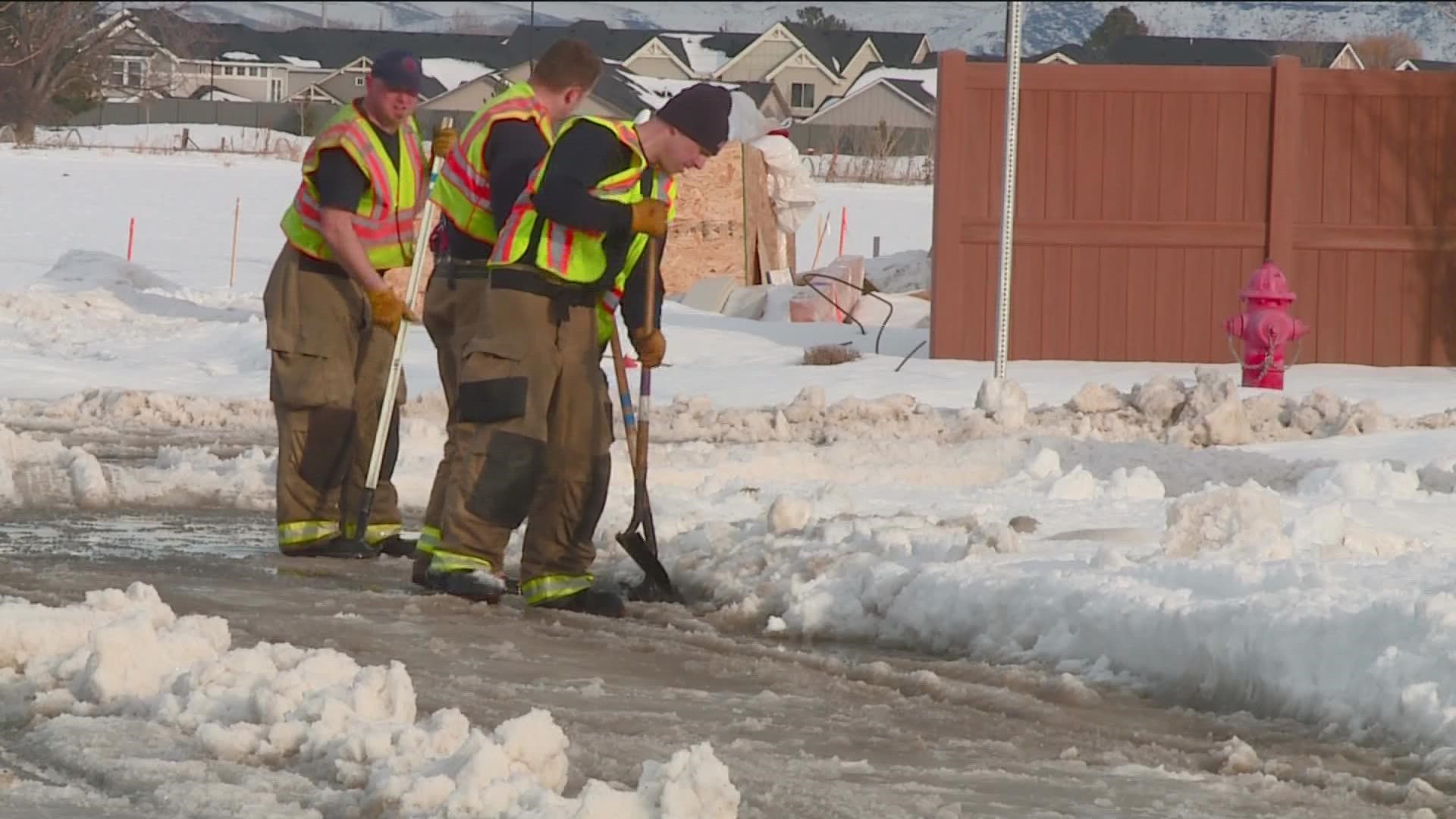BOISE, Idaho — This past summer was hot in Boise, with the most 100°+ days ever recorded (27 days). September also saw sweltering weather, with a 129-day stretch of high temperatures, at least 70° or above in Boise — the second-longest stretch on record.
But after a scorching hot summer, many have been questioning what to expect for this coming winter.
After the unforgettable "snowmageddon" of 2016-2017 with 39.1" of snow in Boise — nearly double the seasonal snowfall average — it is no wonder some of us are a little worried about this winter.
KTVB received this question through our text line:
"I was told by several, several people that Idaho is going to have the worst winter with blizzards? Since 1909! I'm freaking out."
But who is talking about blizzards? To find out, KTVB looked at a few famous forecasts for winter 2022-23:
- The Farmer's Almanac, established in 1818, says: The Far West and the Pacific Northwest will see about-normal winter precipitation; And "Extra Flannels are Necessary!" - a direct quote.
- The OLD Farmer's Almanac, established in 1792, says: For the intermountain region, we can expect warmer than normal temperatures, and above normal precipitation. And "expect cold and snow from mid-November through early February." Sounds like winter to me!
- Accuweather says: The weather setup will be one of the most complicated and dynamic in recent memory due to all of the weather factors in play over the upcoming months. Mainly due to the expected third La Nina winter in a row.
La Niña refers to cooler-than-average sea-surface temperatures across the east-central equatorial Pacific, as opposed to El Niño which signifies warmer sea-surface temps.
The equatorial Pacific looks like it will be cool for another winter.
The National Oceanic and Atmospheric Administration (NOAA) agrees. There is a 75% chance of La Niña during the Northern Hemispheric winter, which would be a La Niña "three-peat" (meaning our third consecutive La Niña winter).
That could mean there are some surprises in store, since there have not been a lot of winters on record that were a third La Niña in a row — but, those few analog winters did end with near-average snowfall for Boise. Those winters are 1954-57, 1973-76, and 1998-2001.
Another reliable source for a long-range outlook would be the Climate Prediction Center (CPC), a division of the National Weather Service. The CPC temperature outlook for December, January and February show equal chances of above or below-average temps for Southern Idaho. The precipitation outlook shows a slight lean toward above-average precipitation, with an even better chance in the central mountains.
So, what is our KTVB outlook for winter 2022-23?
Remember, the confidence and accuracy of weather forecasts decrease the further out the forecast period is. The next 7 days? We're on top of it. Beyond that? Some vague clues. A seasonal forecast? Expect a very general idea.
We will have to see how November goes, but currently our thinking is that we will end up with another year of near-average snowfall for Boise (around 20" for a season total), with slightly above-average snow in the mountains. Great news for skiers and great news for farmers.
But will it be the worst winter since 1909? Doubtful. To ease your winter worries, getting a repeat of a snow-blitz winter like 2016-2017, has only about a 9% chance of happening in any given winter.
The average seasonal snow for Boise is around 20", but it will not all come at once. What we are sure of when it comes to the winter outlook: expect cold weather and snow. Extra flannels are a good idea, and the First Alert Weather team will be here for you every step of the way.
Watch more weather:
See the latest weather forecasts and news in our YouTube playlist:
Download the KTVB mobile app to get breaking news, weather and important stories at your fingertips.

